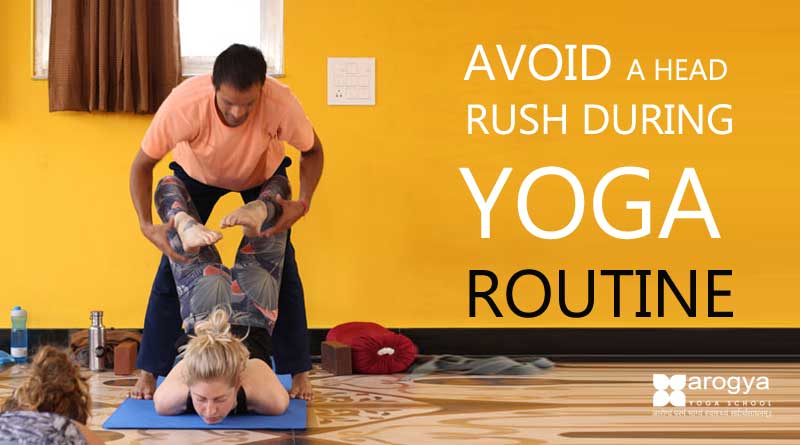
HOW TO AVOID A HEAD RUSH DURING A YOGA ROUTINE?
Feeling a little dizzy while practicing yoga is quite normal. The sensation can vary from an almost pleasant, slightly intoxicated feeling, to nausea accompanied by a frightening feeling that the room is spinning out of control. In severe cases, students can even pass out. Although occasional dizziness while practicing yoga is no cause for alarm, if you regularly experience lightheadedness—during yoga or not—check with your doctor.
There is a scientific reason for a head rush. When you move into a forward fold, the head moves below the heart and closer to the floor increasing upper body vasodilation (blood vessels widen, which reduces blood pressure) and possible venous compression around the pelvis. When you release from the pose, the sudden pressure can cause dizziness.
Two of the most practiced yoga forward folding poses are uttanasana and prasarita padottanasanna and initially when you move forward , you will feel the blood flowing into your head, warming up your face and ears, resulting in a hot tingly feeling and then after a while, a sense of relaxation. On some days, when you inhale while lifting your head to fully stand up, you feel slightly off balance and dizziness. This is a common feeling of head rush.
Here are some steps to take in order to curb your head rushes significantly.
How to Prevent a Head Rush in Yoga Class
- Eat a small meal before class. Yoga teachers generally recommend that students not eat for three hours before practicing asana. It’s not bad advice, as long as you’re not hypoglycemic. If your blood sugar tends to be on the low side, eating a light meal or a protein bar before class may make a world of difference.
- Hydrate, hydrate, hydrate. People who get dizzy when they stand up or when they move their head from below to above their heart often suffer from postural hypotension. Drinking lots of water before class helps pump up the blood volume and seems to keep blood pressure more stable.
- Practice in the afternoon or evening. Many practitioners with dizziness issues have significantly fewer problems if they practice later in the day. This is due to the increased food, fluid, and daily activity that would have readied them for a steady practice.
- In the backbends themselves, concentrate on relaxing your neck. First, lie on you back with your legs relaxed and comfortable. Let the force of gravity soften your voice box and move it back into the neck vertebrae. The soft tissue from the upper lungs to the inner ears and brain should also be relaxed.
- If going upside down makes the world go upside in the opposite direction, use the wall for your downward facing dog (adho mukha svanasana) so that your head stays at or above heart level.
- Move slowly. Sudden transitions result in lightheadedness. Coming out of a forward bend, moving from the floor to standing, even sitting up from Savasana. Make each transition slow, mindful, and focused on the breath.
- Keep your head above your heart. This one is tougher, because it involves modifying the postures. Instead of going fully into a forward bend, try going halfway or keeping your chin slightly lifted. Sometimes a small change in form fixes the problem.
- Work at continuing to open the hips and shoulders with standing poses and seated twists.
However, these are just guidelines for regular practitioners who have no or less medical ailments. Please make sure to talk to your GP regarding contraindications before starting a rigorous Yoga Practice.





